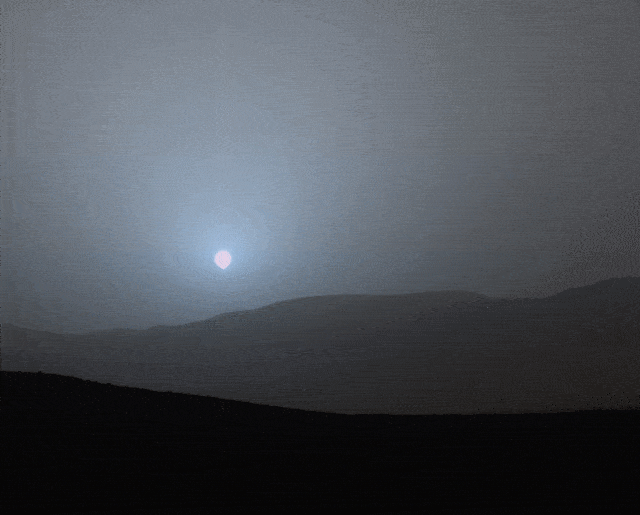Using its Mast Camera, the Curiosity Rover has snapped stunning images of a blue sunset on the Red Planet. The blue-tinted images show the Sun dipping into the horizon as blue streaks shroud the sky across the evening light.

Even though Mars is known as the Red Planet, the dust makes the blue color more prominent, absorbing the red wavelengths.
“The colors come from the fact that the very fine dust is the right size so that blue light penetrates the atmosphere slightly more efficiently,” said Mark Lemmon of Texas A&M University, College Station. “When the blue light scatters off the dust, it stays closer to the direction of the sun than light of other colors does. The rest of the sky is yellow to orange, as yellow and red light scatter all over the sky instead of being absorbed or staying close to the sun.”
It’s sort of a similar situation here – sunsets on Earth paint the sky in spectacular colors with violet, red and bright orange, while during the day, the sky is clear blue; on Mars, the day sky looks rusty red, but the sunset is a romantic deep blue.
Curiosity has been on Mars for almost three years, but this is the first colored image of a sunset it ever took, using the Mast Cam.

According to NASA’s website, the Mastcam is designed to take single-exposure, color snapshots similar to those taken with a consumer digital camera on Earth. In addition, it has multiple filters for taking sets of monochromatic (single-color) images. These images are used to analyze patterns of light absorption in different portions of the electromagnetic spectrum.
Was this helpful?



